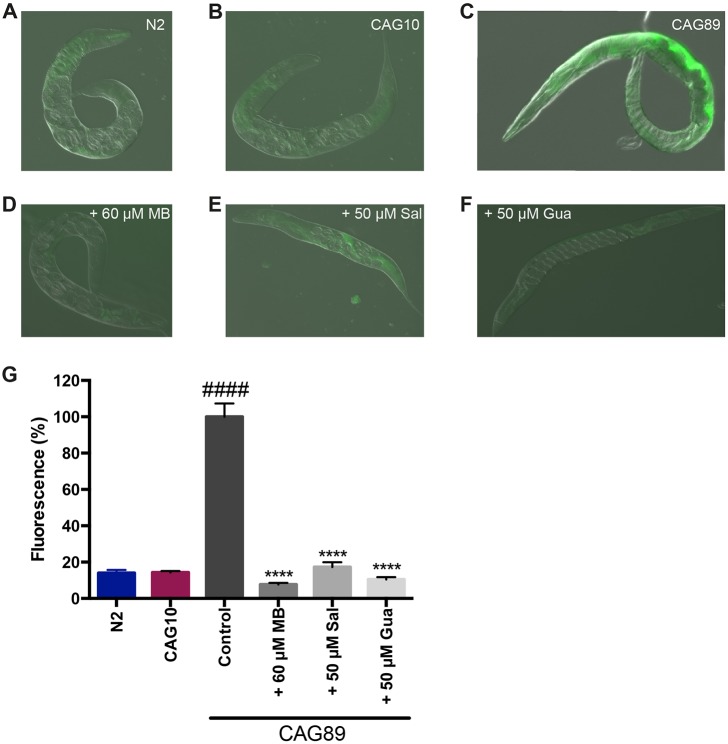Fig. 6.
Reduction of oxidative stress in ATXN3-CAG89 transgenics by Methylene Blue, guanabenz or salubrinal. Shown are representative photos of living, adult (A) wild-type N2 worms and (B) wild-type ATXN3-CAG10 and (C) mutant ATXN3-CAG89 transgenics at day 2 of adulthood in the presence of the oxidative stress marker, 2′,7′-dichlorofluorescein diacetate (DCF-DA). Increased fluorescence is observed in the (C) ATXN3-CAG89 transgenic worms. (D-F) ATXN3-CAG89 transgenics stained with DCF-DA showed decreased fluorescence after treatment with (D) 60 μM MB, (E) 50 µM Sal or (F) 50 µM Gua. (G) Quantification of fluorescence in N2 controls, ATXN3-CAG10 or ATXN3-CAG89 transgenics stained with DCF-DA. ATXN3-CAG89 transgenics showed increased fluorescence compared with N2 or ATXN3-CAG10 worms (####P<0.0001). ATXN3-CAG89 transgenics had less fluorescence when treated with 60 μM MB, 50 µM Sal or 50 µM Gua in the presence of DCF-DA compared with untreated CAG89 controls (****P<0.0001) (Student's unpaired t-tests, n=17-25 for each condition). This experiment was repeated three times. Gua, guanabenz; MB, Methylene Blue; Sal, salubrinal.

